Editor’s note: This innovative studio has released 7 games so far, with another 15 in production for Q2 2017. In less than 2 years, FRVR has gained more than 2 million daily active users and 70 million all-time players. We chat with the founder of FRVR, Chris Benjaminsen, to draw light on this success.
Thanks for taking the time to talk to me, Chris. To kick things off, could you give a little background about yourself and what motivated you to start FRVR?
Of course. Back in 2013 I had worked as the director of gaming for Yahoo! for two years, and it was very clear to me that I needed to do something else. I wanted to go travel the world while still generating income, and taking on as little responsibility as possible. Essentially, my initial motivation was to make the most amount of money with the least amount effort and responsibility.
That sounds like the dream… almost too good to be true.
That was basically it, right? But the more I thought about it the more doable it seemed. I was thinking: how do I build this type of company? I came up with an answer to this fundamental question: what is the core component of FRVR? I realised pretty quickly that it’s essentially the idea that the majority of people will play games – if they are exposed to them. The game itself doesn’t necessarily have to be the best game in the world, it’s really more of a marketing exercise. Not too long before I ended up quitting my job I decided to test this assumption. I requested an exception in my competitive clause that allowed me to start working down this path and also writing about it. I actually blogged heavily on the topic, so there’s a lot of source material that you can go have a look at about this entire process.
How exactly did you put this research into practice with your first game?
The first game I wrote was a solitaire game. Like classic Windows Solitaire. The most boring game in the world, but a game where people will play pretty much indefinitely until they install the next solitaire game. People play whatever they installed most recently, right? So the game itself just had to live up to the expectation of being a fun way to play Solitaire. It was a simple route into a competitive market, but the growth of the game was fuelled by the marketing exercise that followed.
So what was your strategy for entering such a competitive market?
My entire strategy around marketing was that I would write the game in HTML5. So you have all of these Flash sites basically dying off and all of these portals are starved of content. That was going to be my distribution source. Get the games out there and then tease the users to actually install the mobile version with a cross-promotional ad that’s 3x more likely to convert. So that’s essentially a core model of the company, and still is. Even though web and mobile are pretty equal in terms of monetization, the stickiness of an app is so much better than it is on the web. That’s why we build games distributed everywhere, but aim to move players to platforms that monetize better.
How did you move forward after you’d proven this business model with Solitaire?
I started travelling and 2 months after being out of Yahoo! I released my next game. I wanted to write this game on top of the render infrastructure and platform that I had from Solitaire, but I also wanted to write something that was distinctly different from Solitaire. Something that had movement and animations – something more dynamic. So I built this small puzzle game called Hex FRVR. It was just a small test but we were incredibly lucky. People get really stuck on that game.
I agree, it’s an incredibly sticky game. I also remember it being a bit of a viral sensation. Did you approach the marketing any differently with Hex?
I approached all the distribution the same way I did the first time around, but another thing I did is post about Hex on Reddit and it just absolutely blew up on the gaming subreddit. That thread turned into a small AMA with more than 9300 upvotes. I was answering a lot of questions about the game and why I made it. People were super excited about it and that gave me a good bump in traffic. I was so happy about that Reddit thread. It pushed the game to something like 500 concurrent daily players online, and all I was doing was just telling people about this great game I made. It felt good. I was just sharing my story with anyone who wanted to listen to me.
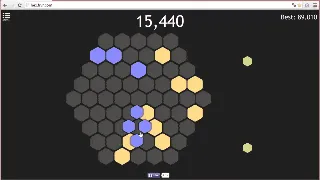
Has Reddit been as successful a marketing channel since Hex?
I think we view Reddit as a good opportunity to get people to know about our games, and it’s something that we’re continuously going to do in the hopes that we get this success again, but to be honest, I think a lot of it was pure dumb luck. A combination of a sticky game, an interesting backstory and a popular post that I could never have predicted at the time. We’ve tried to replicate it since, but never to quite the same effect.
So what happened after the Reddit thread became popular?
5 days later Asia kicked in. Somebody started sharing Hex on Sina Weibo and WeChat. Reddit is not a big place in that context. The game shot up to about 25,000 concurrent users and Reddit looked kind of insignificant at that point.
Do you think these two events were associated?
It feels associated but I cannot say for sure whether it was. The causal relationship between the two is just not something I understand. We do see it in games that we release now as well. Typically somewhere between a week or a month after we push it out into the US channels it just goes crazy in China, and Asia in general. But as I said, it’s not something we really understand in too much detail. I’m fond of saying that we’re accidentally successful in Asia.
What happened after your “accidental” success?
At this point in the company – about 3 months after I quit my previous position – a US company offered me a 7 digit figure to buy the game outright, and twice as much if I were to come and join their company. But I had just gotten out of this corporate environment and I saw Hex as an opportunity. It was an amazing offer, but it was not for me. At this point the game was making around $1500 per day. It wasn’t going to make me 7 figures in a year, but it would probably do that in 3 or 4 years. So I kindly declined.
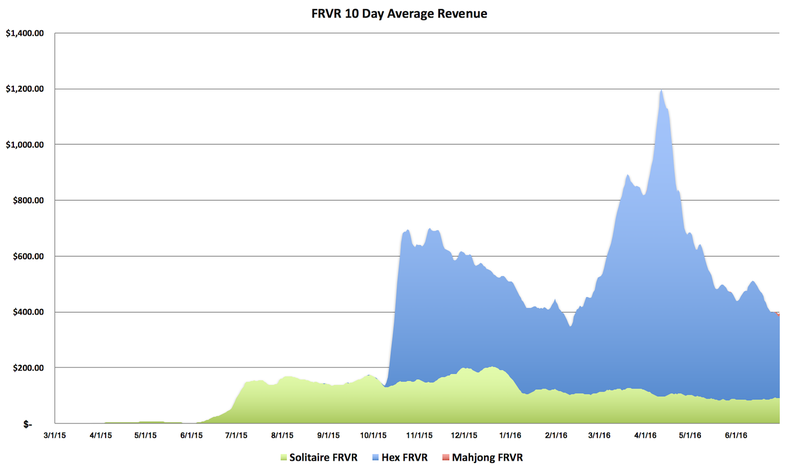
So that’s over half a million dollars a year in revenue – all from ads?
Yeah, the entire company is structured around what I touched on earlier: as much value out of as little effort as possible. Ad monetization fits that model nicely. Maximum value, minimum responsibility. It’s almost a company ethos; our rules of engagement.
Do you have any other rules?
Yeah, I actually listed a bunch of rules for myself when I set up the company. One rule was that I was not allowed to work more than 24 hours a week. If there was anything I needed to do outside of that time, it would have to wait until the next week. I’m a workaholic at heart, and I work way more than that right now, but that was the rule I set at the start for going travelling and I wanted to stay true to that goal.
Have your rules helped get FRVR to where it is today?
I definitely think so… another rule that I set for myself was that I was not allowed to spend an hour on anything unless it was worth $200 over a year. And the amazing thing that did was that it required me to then sit down and try to evaluate everything I did. When you do that, this incredible thing happens where you can just sort everything by what has the most value. This was one of the most important things that I did, even though I didn’t realise it at the time.
So you mentioned earlier that you turned down 7 figures for Hex. That sounds like a bold decision. What made you decline the offer?
Yes, I very kindly declined that offer because it got me thinking: why would a company like that be interested in a company like mine, and specifically why in something like Hex? Without actually ever asking them I ended up concluding that it’s a matter of users. That value was in the users and in the game’s ability to generate these free downloads.
How many daily active users was Hex seeing at that point?
It was quite substantial. I think as this point, around October 2015, Hex was consistently seeing more than 250,000 daily active users. That was within about 3 months of me being out of Yahoo! and I was not unhappy with that. Of course, it didn’t stay up at that level, it basically just flatlined at around 150,000 daily active users.
So how did you decide to move forward with this substantial user base?
After the offer I started thinking about how I could potentially make this something more than just a company for me. I was busy traveling, so I spent almost half a year writing my next game. A Mahjong game. I spent a lot of this time thinking about how I could make the business model more than 10x as successful. Sure, I could make 20 games myself over the next few years, and maybe half of them would be moderate success. I could probably do that myself, at best. But I could never make it into something that was 100x as valuable. So I concluded that the only way I would be able to take this even further would be to team up with other developers.
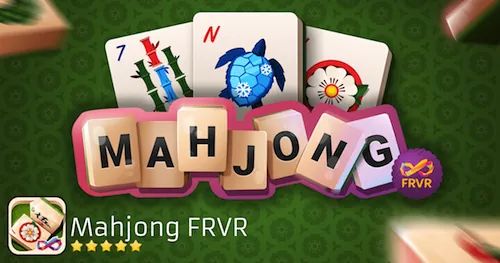
Hiring whilst managing every aspect of the company sounds difficult…
It was, especially because I wanted to find a way where I could work with the absolute best of the best. The problem with the best of the best is that they have a tendency of knowing exactly how good they are. This often makes them ridiculously unhireable. So I thought: why is this the case? What are the opportunities that I’m fighting against? What opportunities are important to these people?
General advice to make a game successful on the iOS app store today is fairly simple: build a good game and have a million dollars for marketing.
I isolated that down into three different things that would make an offer interesting to me. One of those things was flexibility. A second one was security. You don’t want to worry about where your next meal is going to come from. You’re not going to be creative in that situation.
The third point was unlimited upside. You don’t want to feel like you have a job. You don’t want to feel like the only thing you’re going to get for performing well is a pat on the shoulder. People know they can do more, they can build up their own company and the kind of people we look for are the kind of people who’ve tried and failed. People who know how cutthroat games marketing is. And it is. It’s ridiculously cutthroat, right?
General advice to make a game successful on the iOS app store today is fairly simple: build a good game and have a million dollars for marketing. These people are great game developers, but typically they don’t have that. They need somebody or a publisher to help them unless they are incredibly lucky. I designed an apprentice program for game developers that fits each of those three points.
How did the FRVR apprentice scheme address these areas?
So if we look at all of this. The first point was flexibility. For this we say: work wherever in the world you want, and work for us 3 days a week – for 24 hours a week. The rest of your time is yours and yours alone, you can do what you want with it. You could go and work for somebody else and we’re fine with that. The second thing is security: we will pay you a full time living salary. Whatever it is you need to live, wherever it is you are – and we will guarantee that for half a year.
And then the third point, about upside. Your free time is your time, but one thing you can do is pitch your own games to build on our platform, using our technology and publishing infrastructure. We still source the art and music. As a developer, the only thing you have to worry about is building a great game. We take care of the rest, but for game developers who pitch and build in their own time – we share revenue 50/50.
So it’s almost like a publishing deal?
Kind of, but more beneficial for the developer. Compare it to a typical publishing deal. You go to whoever you go publish with and 99% of the time they want you to go build the game and take all of the risk. And then if they accept the game they might, if you’re lucky, give you 40% of the revenue. It’s more likely that you’re going to end up with 30% and any expense they have in the context of getting that game made will be deducted from that figure.
We don’t do that. It’s a pure 50/50 revenue share and it’s a revenue share that you own. You can sell it if you wish, but we have first rights and refusal rights so we can buy it at whatever price anyone else is willing to pay, but beyond that it’s a proper unlimited that you get forever. Even if you quit, you get to keep it. And after half a year we can renegotiate, so you can keep building games for FRVR with a full-time salary for 24 hours a week, or you can choose to just build games under the 50/50 revenue share arrangement, if you feel that offers better value.
So it’s not a classical publishing arrangement where we say: if you come over to us, maybe we’ll make you successful. Where you sit down for half a year and spend all of your money and efforts for someone just to consider taking you on board. No, that’s not it. You join us, we pay you a real full-time salary, you learn our tools and how to build games on top of our platform. That was the program that I came up with.
So how did the apprentice program go? Who was the first person to join?
The first person to join was Sebastian, around May 2016. I was probably working around 10 hours a week at this point, doing a lot of travelling and not a lot of working. But Sebastian joins and starts building the first game – that’s actually Lines FRVR.
It was immediately obvious that my technology platform was nowhere near as good as it needed to be. This was something I knew and something that was completely anticipated. I’m not the best manager in the world, so having a rock solid infrastructure in place was essential. I’m good at getting people motivated, but getting people to have discipline around it is not my greatest skill, so working with Sebastian was a dream. He was so far ahead of me. When he wrote Lines he was just 23 years old. When he wrote it he was living in China, in a Kung Fu school, spending the first 6 hours each morning learning Kung Fu, then the afternoon coding.
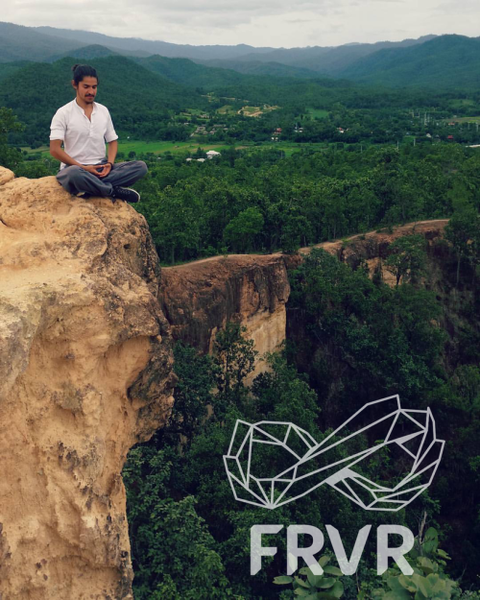
How did the release of Lines compare to Hex?
When we released lines it was around September or something like that. It went through the same process. We tried posting it on Reddit but it never really took off to the same extent as Hex. It did however still get shared in Asia, and we noticed a peak in traffic as a result of that. I think we peaked at around 400,000 daily active users, but it didn’t have the same stickiness as Hex. Our traffic very quickly dropped down to around one third the DAU of Hex.
You mentioned some issues with your original infrastructure. How did you address this?
About 8 months ago one of my business associates and friends, Brian Meidell, happened to find himself without a job. His past is basically running big studios. Prior to joining he ran a studio called Cape Copenhagen, a big production house creating games for pretty much anyone, including companies like Lego. He had exited that as CEO because he wanted to try new things. I saw that as a perfect opportunity to help get some more managerial resources for FRVR. At this point I was thinking of stopping travelling. I knew that it was almost over and that I really wanted to start working again. And Brian was an incredible technologist. So he joins the company, and we spent about 12 weeks refining the managerial onboarding flow for apprentices, but also the technology platform.
What technological improvements did you make together?
I have to say a lot of it was Brian. I’m good at getting things done but I don’t necessarily do it in the smartest possible way. Most people are the opposite and tend to falter at the 90% mark. A good example is that it used to take me 4 weeks to take a game from HTML5 and make sure that I had all of the image assets, all the stuff you need for iOS, and to upload the binaries and get together all of the screenshots and whatever, right? But Brian… he’s like an architect. He’s structured, he’s opposed to repetitive work. He has many qualities that a lot of developers have, so he streamlined a big part of that process.
Can you give any specific details about how this improved your workflow?
Well, one example is that I used to take all of the screenshots manually, so something he introduced was translation. When you do localisation, you need a screenshot of your game in all of the different languages. So 26 different languages means 208 different screenshots, and that’s just for the Apple App Store. It very quickly became unmanageable.
Brian was 100% opposed to that and he was right. He wrote some tools that streamlined this entire process so that it takes a fraction of the time. We have an artist working with us now to help with all of the assets. All he has to do with Brian’s tool is navigate to a state in the game and pause it, then press a single button and it just automatically cycles through all of the different languages and takes a screenshot for each in every orientation and screen size. This is something that probably took me a week before. It now takes less than an hour.
It took some time to create this tool, but the return on investment has definitely made it worthwhile. But I remember being really annoyed that he was spending time writing this tool and not just getting the job done. Brian was right and this was a good lesson. He had a different kind of attitude and we have to accept that we’re all different, and that’s what he’s really good at. He has to be the guy to decide what happens – what gets put into this pipeline.
Do you have any other examples of these time-saving tools?
He did create another great tool. I had this technology that allowed me to build a mobile wrapper around a game and release it on mobile. That was also a very manual process requiring a lot of different IDs. So Brian wrote this thing called ‘FST’ which stands for the ‘FRVR Super Tool’. So today building to iOS is as simple as typing “fst build ios” and it completely generates a new iOS project from scratch that wraps everything, adds the IDs and whatever into this project and you have a finished product ready to upload to the App Store. That used to take at least a week as well to setup a new game. Now it’s literally a minute. All of this stuff was needed for us to take on more apprentices. Sebastian was a special case – a BETA apprentice. He got exposed to all of this. A lack of management. Everything.
So at this point you’d hired your first developer, a studio manager and improved the technology. What were your next steps?
It just so happened that I’d been talking to Facebook for quite a while at this point, and I knew they were going to do something in HTML5. I’d known this for quite a while. So I just kept pestering about when they were ready to do stuff. And at one point they write back and say “now”. So we were one of the first 10 partners for Facebook Instant Games in Messenger. We were in the original release announcement and the only company of our size. Just 3 people. So the game goes live on Messenger and we go from having 150,000 daily active users to more like 550,000. It was just a ridiculous opportunity. I’d never seen anything like that.
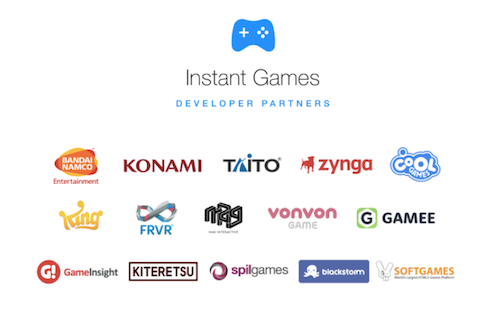
Wow, that’s a huge jump in users. What were you thinking at that point?
Yeah, I was super happy about this. It isn’t very often that a new platform like this comes along, and the people that are able to have the first opportunity on these platforms are typically very highly likely to become successful. We were there from the get go. This happens November 13th 2016. That’s when it goes live. Brian and I looked at each other and said: “OK, we can’t wait anymore.”
So between the 15th and 20th of December we team up with 7 more developers, making it a total of 8 at the time, and we get them to start making games. We also start an aggressive search for more platform developers to come and work in our Copenhagen office and we also start looking for a producer/manager to oversee these apprentices. We now have a guy who does music full time for us. We have an artist who works with us full time. And we’ve been hiring new apprentices each month. So we’re 12 people now.
After the initial bump of Facebook Instant we flatlined at around 250,000 DAU and we’ve grown steadily since then. We released Basketball FRVR a few months ago and that release brought the overall DAU up to about 750,000. It’s an incredibly highly polished but simple game which fits into the original FRVR strategy that I mentioned earlier.
And what plans do you have for further expansion?
We want to continue growing our European presence – mostly developers building tools and supporting elements for the other developers. We have been adding 2 new apprentices every month since March and we plan to continue adding them at that pace. We have 15 games in development, 12 ready to go but we plan to space the releases throughout the year. We also released Balloon FRVR and Slash FRVR a few weeks ago and our total DAU has grown to a bit more than 2 million across our network. So that’s where we are now.
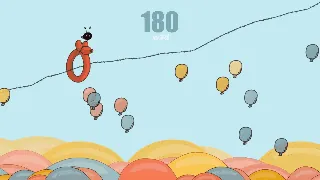
Do you plan on approaching any aspects of the business differently going forward?
One thing we aim to do more aggressively which we haven’t already is user acquisition. While we believe strongly in organic growth, we also believe heavily in the value of us having a network of games. And the value of us having a network of one user in many games. So we wanted to be able to buy users cash flow neutrally for one of our games, like Hex FRVR, and make absolutely no money on those users, but then have the value of those users in our network and in being able to cross-promote all of our other games.
A few high profile studios are also pursuing this business model. How do you think FRVR can continue to stand out in this crowded space?
True, there are similar companies using this model, but I think we have a different approach to market that allows us to do it with 100% commitment. I actually think we can beat those companies at that game as we’re much more platform agnostic. So that means we can do stuff that they cannot do. For example, say a new platform like Facebook Instant comes along; we can do a simple update to our core platform infrastructure and roll this out for all of our games, whereas another studio would need to speak to all of their developers to update all their games for the new platform.
Have you had to think about things differently since bringing on more FRVR apprentices?
One thing that we have tried to keep as a part of the core of the company is making sure that it is a fun company to be at. We want to constantly reevaluate what we are doing, and the primary metric for that is happiness, to the point where we have a KPI document that we track where the primary KPI is eDFF, which is ‘Effective Daily Fun Per Founder’.
Is there anything else that you would like to share with other game developers?
I would just highlight that anybody can do this. I was not in a unique position to make this a success. For sure, I ended up getting fairly successful, but you could totally get started and validating your idea while working a full-time job, as long as you are willing to spend a few hours in your spare time working on your project. So there was nothing that made my position special or made me uniquely positioned to do this, except maybe an understanding of how the market works. If you have a great idea, go for it.
Original interview: https://gameanalytics.com/blog/reaching-2-million-dau-interview-frvr.html



I definitely wouldn't turn down 7 figures for Hex, but I understand that this guy had his own reasons. But I love money way too much, so I won't even hesitate and accept the offer. That's why I wasn't thinking much after reading this review https://www.coininsider.com/bitqt-review, and I was determined that I have to at least try this platform. And, to be honest, I'm glad I did it.